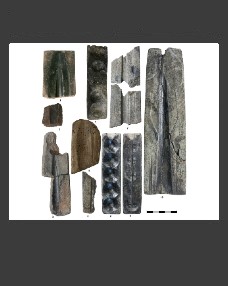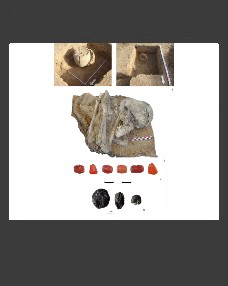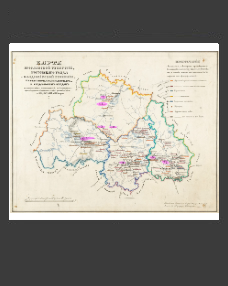Stanislav A. Grigoriyiev
Institute of History and Archaeology, Ural Branch of the RAS, Chelyabinsk, Russia
E-mail: stgrig@mail.ru
Keywords: the late Bronze Age, the Southern Urals, settlement, stratigraphy, chronology and periodization.
For about 70 years, the settlement sites of the Southern Trans-Urals have been used as basic complexes for understanding the correlation of the cultures of the Andronovo family of cultures. The article is focused on the stratigraphy of the Bronze Age settlement of Mochishche in that region. The excavations at the settlement were carried out at a large area (4,000 m2), which made it possible to identify all the cultural complexes of the settlement and determine their relationship with each other. In total, 77 individual layers were distinguished, which were combined into four building horizons. The two lower horizons are attributed to the Alakul period, the Cherkaskul horizon follows them and the Sargary horizon is above it. The coexistence of Petrovka and Alakul pottery was recorded in the Alakul horizons. Initially, the proportion of Petrovka ceramics reached a third, but gradually it has decreased. In the Cherkaskul horizon, the coexistence of Fedorovo, Cherkaskul, Mezhovka and Fedorovo-Cherkaskul pottery is noted. In the Sargary period, only the pottery of the Sargary culture existed. At the same time, there is a significant admixture of earlier and later pottery in all horizons, caused by digging over, reuse of old pits, etc. Therefore, the direct use of data on the distribution of pottery types throughout layers leads to erroneous results. It is necessary to analyze the mutual occurrence of types in individual layers; sometimes the calculation of similarity coefficients and other special procedures are required. It cannot be excluded that chronological gaps existed between these horizons, although this contradicts the constant reuse of old pits at later periods. Based on radiocarbon dates, the Alakul horizon is dated to the 22nd – 21st centuries BC, which makes it possible to suggest that the Alakul culture begins to form in the forest-steppe as early as the period of the Sintashta culture existence. The end of this period is associated with the appearance of Fedorovo pottery at the settlement, but the Fedorovo layer proper is absent there, as well as at other Trans-Ural settlements. The dating of the Cherkaskul horizon is not clear, and the Sargary horizon refers to the period of the 12th – 9th centuries BC, that is, the steppe population were penetrating there as early as the Late Sargarinsk stage.
DOI: 10.31857/S086960630004127-8







